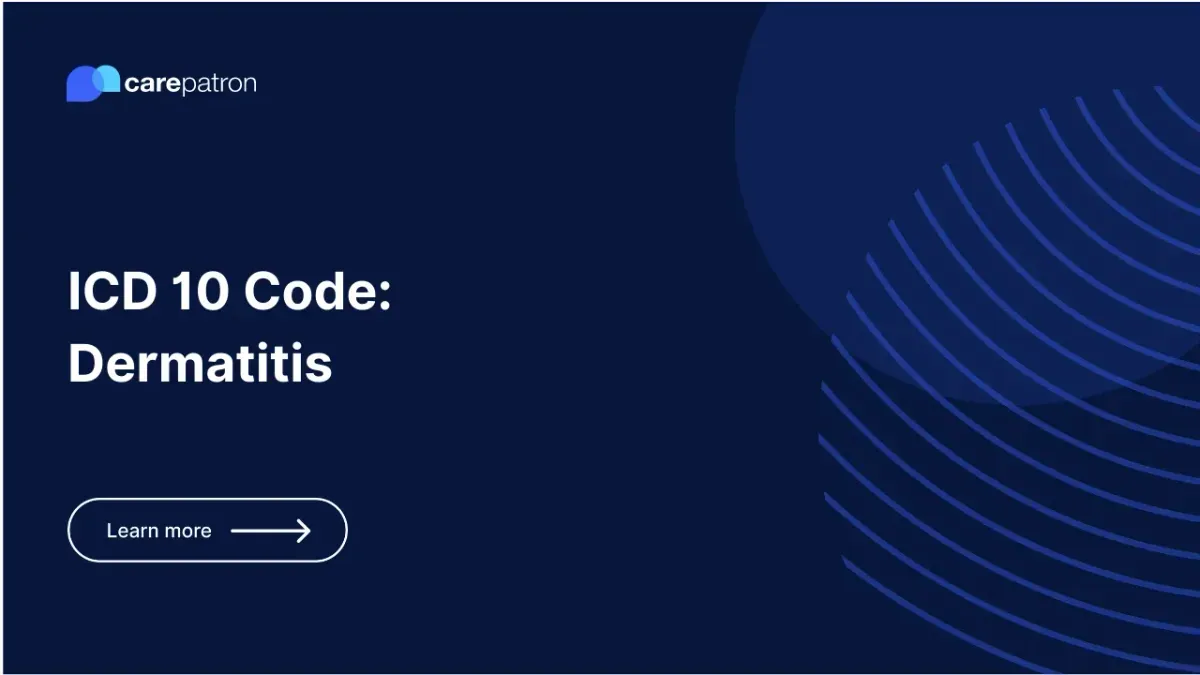
Dermatitis ICD-10-CM Codes
Stay updated with our detailed guide on Dermatitis ICD-10-CM codes. These will aid you in precise clinical documentation and billing.
Use Code
Commonly asked questions
Dermatitis can be triggered by allergens (e.g., nickel, cosmetics, dyes), irritants (e.g., soaps, detergents), genetic factors, or environmental stressors like heat and humidity. In some cases, stress and immune system dysfunction also play a role.
No, dermatitis is not contagious. It cannot be spread through skin-to-skin contact, as it is typically caused by individual sensitivities or immune responses.
Some forms of dermatitis, like contact dermatitis, can resolve completely once the trigger is removed. Chronic types, such as atopic dermatitis, can be managed effectively with treatment but may persist or recur over time.
EHR and practice management software
Get started for free
*No credit card required
Free
$0/usd
Unlimited clients
Telehealth
1GB of storage
Client portal text
Automated billing and online payments
